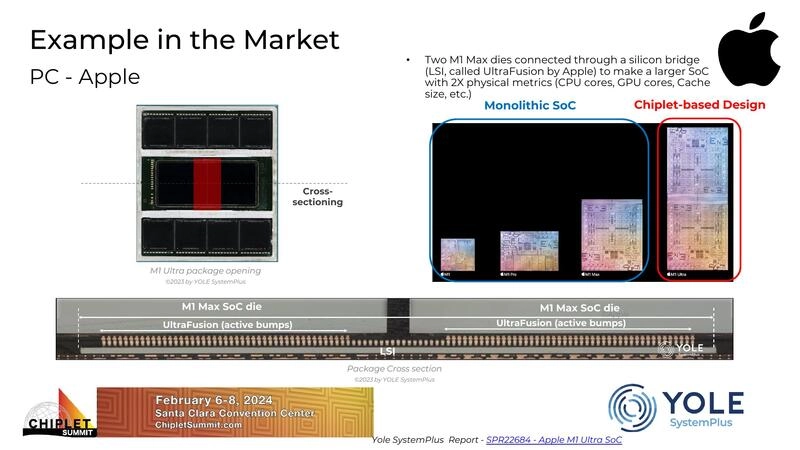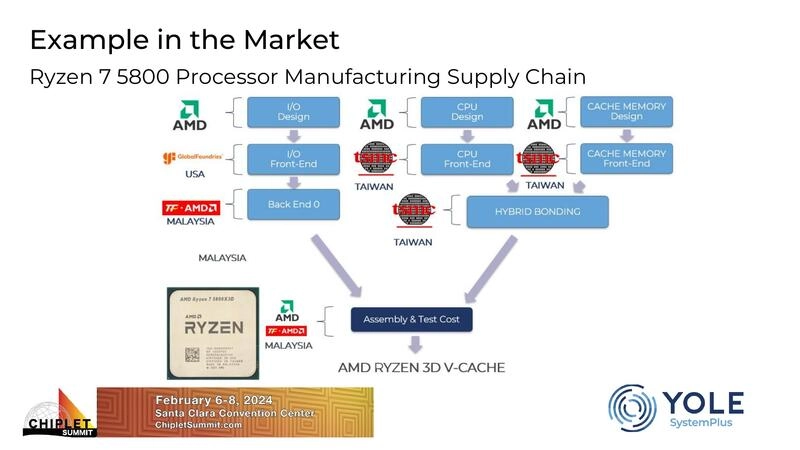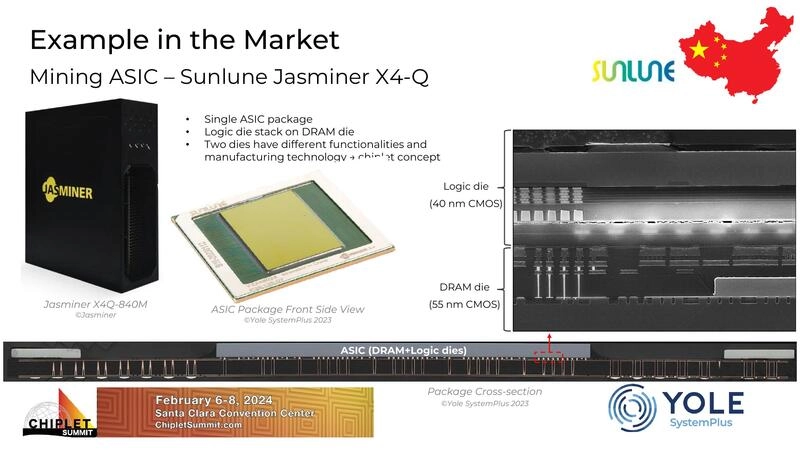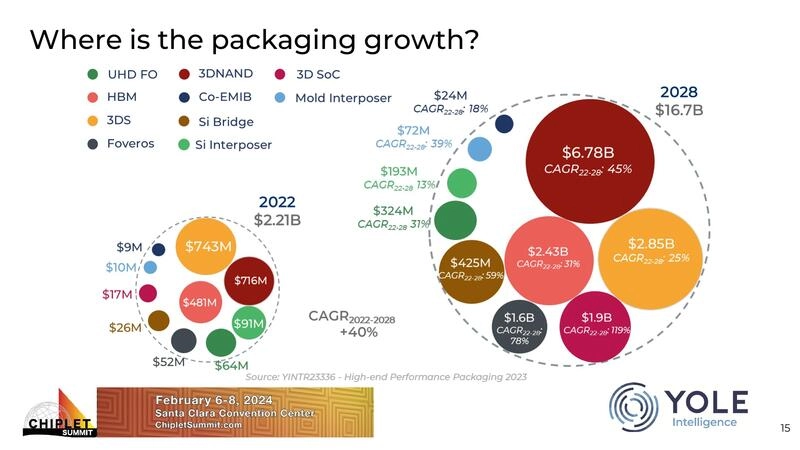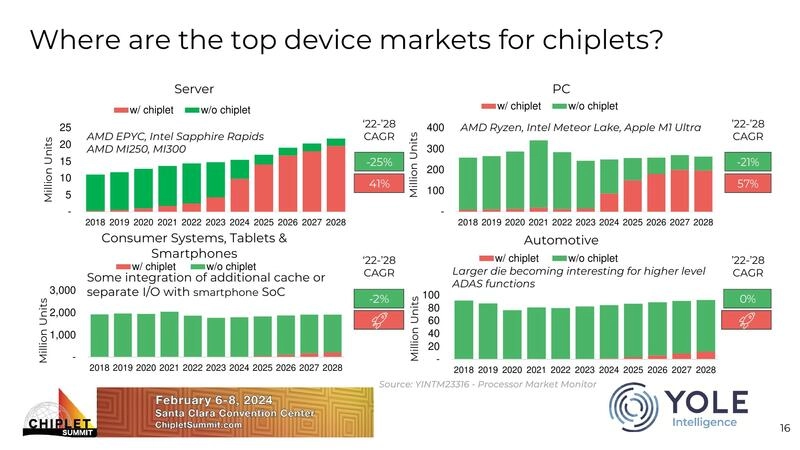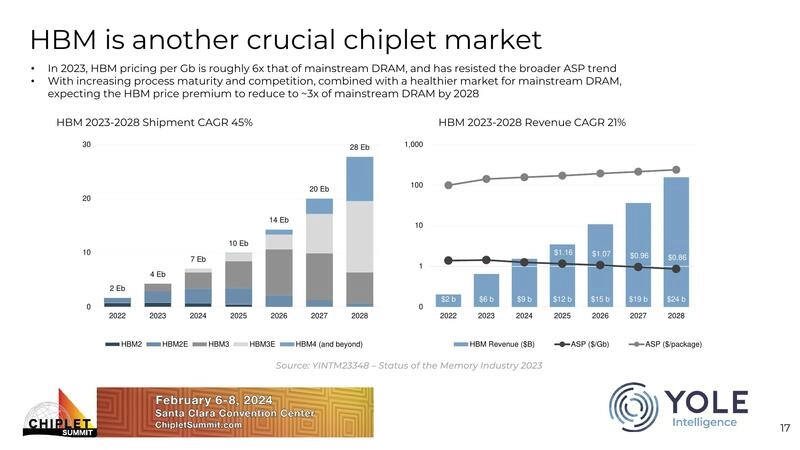Chiplet Markets Are Rising: Where and When?
By Tom Hackenberg, Principal Analyst, Yole Group and Ying-Wu Liu, Technology/Cost Analyst, Yole SystemPlus
Chiplets allow designers to break up the design of large chips into smaller units. The advantages are shorter design time, lower cost, easier drop-in inclusion of already available designs, increased modularity and scalability, and fewer manufacturing defects. Chiplets allow for ready inclusion of analog and other accessory circuits, proven designs from previous nodes, and designs from other technologies. Obviously, the major issue is integrating all the chiplets together. This requires high-speed buses to avoid latency and maximize throughput, interconnection patterns, and often an interposer to provide connections between chiplets. The drop-in approach should eventually lead to a large ecosystem including chiplet libraries, IP, stores, and exchanges.







